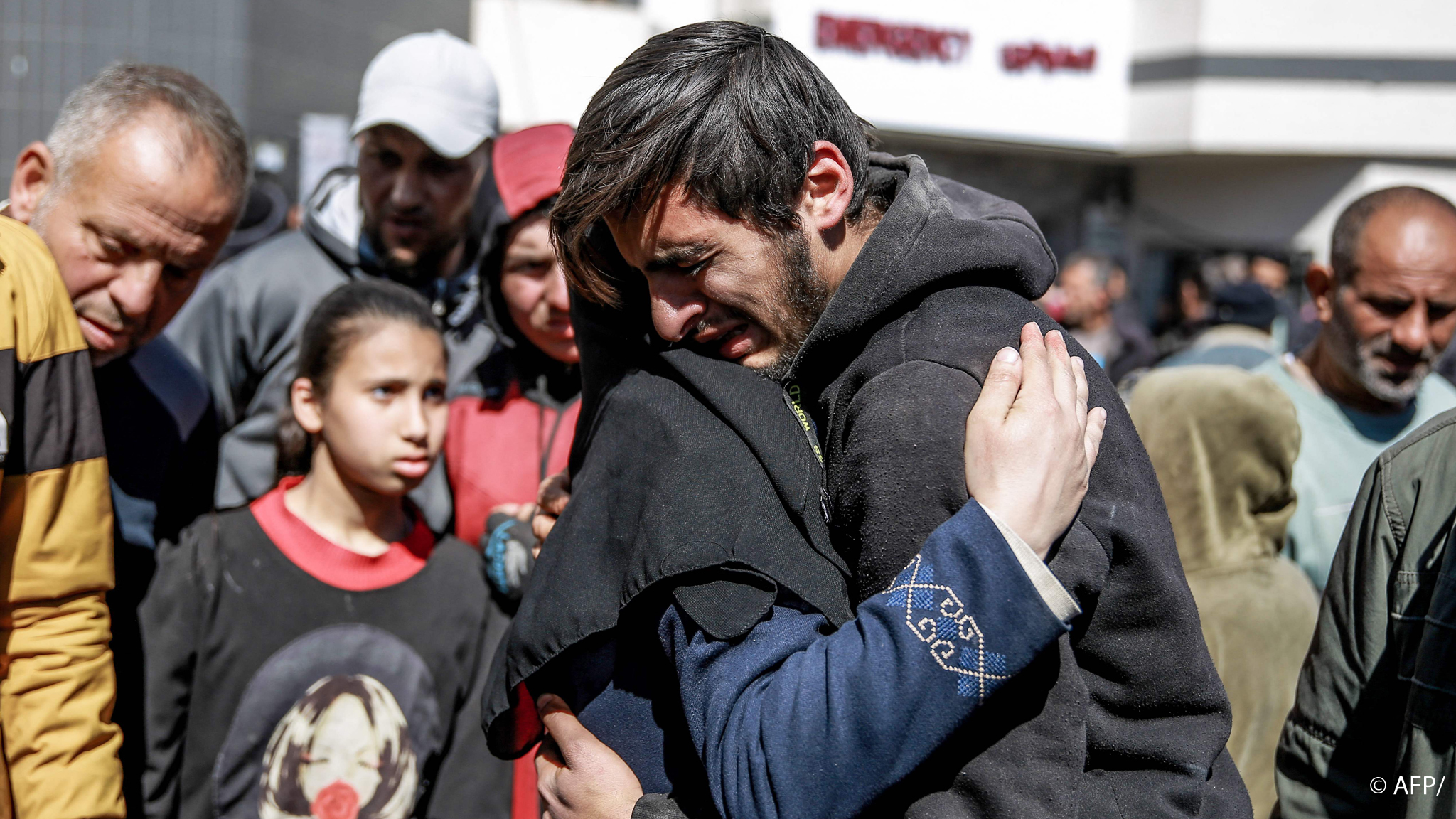What we know about Gaza aid convoy deaths

Competing claims emerged after dozens of people were killed on Thursday in a scramble for aid in Gaza, with the Hamas-run territory's health ministry saying Israeli forces shot them, but the army insisting they died in a stampede.
Here is what we know so far:
A witness in Gaza City said the violence unfolded when thousands of people desperate for food rushed towards aid trucks at the city's western Nabulsi roundabout.
"Trucks full of aid came too close to some army tanks that were in the area and the crowd, thousands of people, just stormed the trucks," the witness said, declining to be named for safety reasons. "The soldiers fired at the crowd as people came too close to the tanks."
The health ministry in the Hamas-run Gaza Strip said 112 people were shot dead and 760 were wounded. Hossam Abu Safiya, director of Gaza City's Kamal Adwan Hospital, said all the casualties were hit by "bullets and shrapnel from occupation forces".
An Israeli military official said there was an initial stampede, involving "thousands of people" in which "dozens of Gazans were injured and killed, some of them run over by the trucks".
Part of the convoy had then managed to continue on its way. "Dozens of civilians rushed to the trucks, approached the tanks and the forces nearby," the official said. "Soldiers fired warning shots in the air and then fired towards those that posed a threat and did not move away. I can say we had a limited response, limited fire... It was not a massive event from our perspective."
Aerial images released by the Israeli army showed what it said were scores of Gazans surrounding aid trucks in Gaza City. AFP images showed mourners gathered around bodies wrapped in white shrouds at Gaza City's Al-Shifa Hospital.
On 20 February, the World Food Programme announced that despite widespread hunger, it was again suspending aid deliveries to northern Gaza after two convoys were mobbed and looted by desperate civilians. The two convoys were its first in more than three weeks.
On 18 February, a convoy had to fend off "multiple attempts by people trying to climb aboard our trucks, then facing gunfire once we entered Gaza City", the UN agency said.
On 19 February, "several trucks were looted... and a truck driver was beaten," it added.
For months, aid workers have warned of an increasingly desperate situation for Gazan civilians, and on Monday an official from the UN humanitarian office OCHA said widespread starvation was "almost inevitable".
UN estimates show that 2.2 million people – the vast majority of the Gaza Strip's population – are threatened with famine, particularly in northern areas around Gaza City.
According to the UN agency for Palestinian refugees, UNRWA, just over 2,300 aid trucks entered the Gaza Strip in February, a drop of about 50 percent compared with January. That is an average of well below 100 trucks per day, down from around 500 that were entering daily before the war.
U.S. State Department spokesman Matthew Miller said the rush for aid showed the situation was "incredibly desperate" and called on Israel to "enable safe and secure distribution of that aid throughout Gaza".
Israeli military spokesman Daniel Hagari said the convoy of 38 trucks ferrying aid from Egypt had "entered Gaza for distribution by private contractors". He said aircraft as well as tanks had been deployed to secure the convoy route but that there had been no air strike or tank fire towards the aid convoy. Rear Admiral Hagari said troops had conducted similar convoy protection operations "the last four nights without any problem".
Most Gaza aid convoys are organised by UN agencies, but in a post on X, UNRWA chief Philippe Lazzarini said: "Neither UNRWA nor any other UN agency were involved in this distribution." (AFP)
